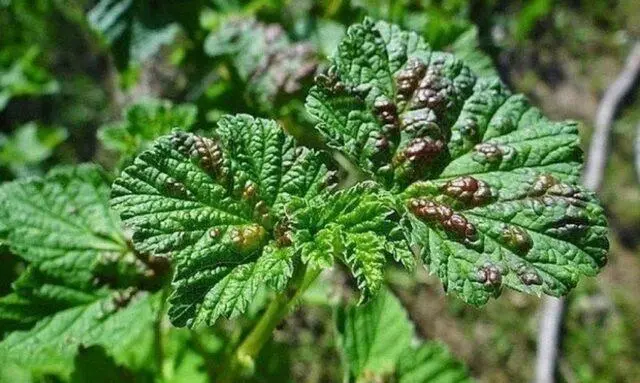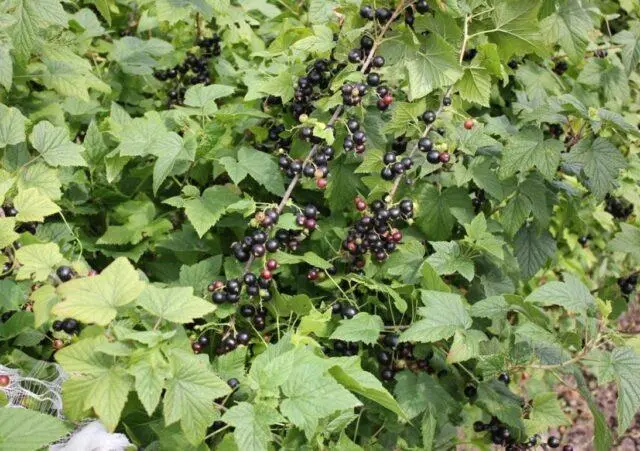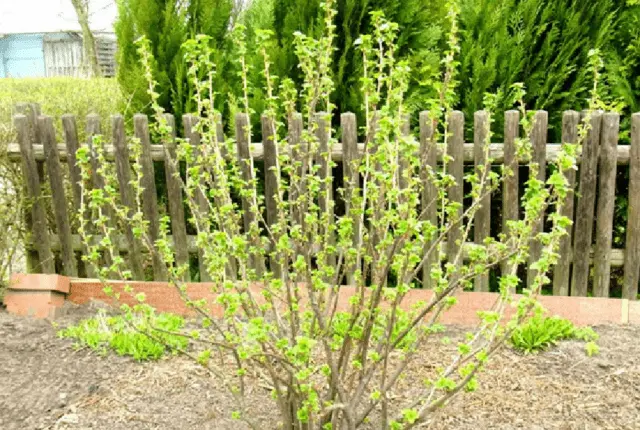Contents
Scab on the currant appears in conditions of wet soil, when the irrigation rate is systematically violated. It manifests itself as olive-brown spots on the foliage, after which it turns yellow and falls off. In this case, the shoots are deformed, and then completely stop growing. For treatment, folk remedies and fungicides are used.
Signs of appearance
Scab is an infectious fungal disease that affects fruit and berry crops, including currants. All above-ground parts of the plant suffer – shoots, foliage, berries, which inevitably leads to crop loss. The colonies feed on leaf tissue. They multiply and capture large areas, after which the foliage dies off.
Brown spots appear on currant berries due to scab, and the skin cracks. Because of this, bacteria penetrate the pulp and lead to rotting. The described processes proceed especially well during wet and cool weather. The longer the rainy season lasts, the more the bushes suffer.
The main signs of scab on currants:
- dark brown spots on the surface of the leaves;
- yellowing of foliage;
- young shoots die off;
- the kidneys turn black;
- the fruits are covered with a brownish film;
- they crack and rot.
In its development, the infection goes through four main stages:
- Initial – fungi release spores that infect young shoots and foliage. As a result, spots of dark color (olive color) appear on them. They are velvety, uneven – these are the spores of the pest. The spots increase in size, turn brown and then cover almost the entire leaf. The tissue of the plant on the surface dries up and crumbles.
- Progressive – the infection spreads to the emerging flowers, and then to the ovaries. As a result, a coating of a viscous, viscous consistency appears on them. Leaves and flowers dry out, fall off, many fruits never form.
- Critical – leaves, currant berries are covered with a brown coating, resembling felt in structure. Shoots stop growing, they deform, dry out and begin to crack. The young growth is bent, after which it quickly dies.
- The last stage of scab development – new currant shoots no longer grow. If leaves appear, they immediately fall off, cracks form on the skeletal branches. At this stage, the fungus re-infects the shrub, which aggravates the course of the disease.

Currant leaves affected by scab are easy to identify by visual inspection.
What is dangerous scab
Scab is very dangerous because it affects not only currants, but also other fruit and berry crops. This leads to negative consequences:
- berries cease to ripen on the bushes;
- fruits that have already formed crack and rot;
- they harbor bacteria that can be dangerous to human health;
- productivity is greatly reduced;
- the appearance deteriorates – the foliage falls off, the shoots curl and dry out;
- adjacent plantings are also infected.
Another danger is that the spores of the fungus overwinter under the bark of the currant. If the bushes are not treated, they will survive the frosts and begin new attacks in the spring. This can lead to the death of the plant.
How to deal with scab on currants
Getting rid of scab on currants is real – for this you need to use different means. If the disease is already running, chemicals are used. If it is at the initial stage, it is permissible to use folk remedies. Often, both groups of methods are combined in order to achieve a quick result.
Folk methods
Among the popular folk remedies for scab on currants are the following:
- Ash infusion – 200 g per 10 liters. It is kept for a day, then the bushes are sprayed or the root zone is watered.
- An infusion of 300 g of tobacco dust in 3 liters of hot water is prepared for three days. At the same time, an infusion of garlic cloves (3-4 heads) is made in 3 liters of hot water. Infuse for 3 days, then mix and add a teaspoon of red pepper, as well as liquid soap (2 tablespoons). The treatment of shrubs is carried out before the swelling of the kidneys.
- A solution of potassium permanganate – 5 g per 10 liters. Sprayed three times a season: in early spring, on the eve of flowering and after harvest.
- Horsetail infusion – 3 kg of fresh grass is poured with a bucket of water at room temperature, insisted for four days, filtered and treated with bushes 3-4 times per season.

Bushes are sprayed late in the evening in dry and calm weather.
Chemicals
To combat scab on black and other varieties of currants, chemicals are especially effective – various types of fungicides:
- “Fundazol” – a drug soluble in water, the active substance is benomyl. Penetrates into plant tissues through the root system, inhibits the reproduction of scab fungi. Resistant to precipitation, gives a protective effect for 2-3 weeks.
- “Shavit F” is a contact-systemic fungicide based on two active ingredients (triadimenol and follet). Violates biosynthesis, respiration of scab fungi, prevents reproduction. It has a protective effect up to three weeks. Differs in safety for soil bacteria. Used for both treatment and prevention.
- “Paracelsus” is a fast-acting drug based on the active ingredient fletriafol. It rapidly spreads through currant tissues, disrupts reproduction processes, and prevents the development of infection. Valid for up to three weeks.
- “Skor” is a drug based on the active component of difenoconazole. Penetrates into currant tissue, inhibits the growth of scab fungi. The first results are noticeable the very next day. In this case, the protective effect lasts up to 10 days. To achieve the best results, currant processing is recommended at a temperature of at least 15 degrees.
- “Horus” – a drug in granules based on cyprodinil. It has a systemic mechanism of action. Inhibits the growth of scab mycelium, interrupts the life cycle. Provides a protective effect for up to 15 days. The agent can be used for processing even at a temperature of +2 °C.
Preventive measures
To prevent scab on red and other types of currants, certain preventive measures must be taken. The main methods are the processing of currant bushes with special means, as well as the agricultural practices described below.
Urea solution
Urea (carbamide) refers to organic nitrogen fertilizers. It dissolves well in water and is quickly absorbed by plant cells. Used for feeding and processing currants from scab. Spraying starts a week before the first frost. To do this, prepare a solution (ratio of 35 g per 10 liters of water). This volume is enough for 6-7 adult bushes.
inkstone
Ferrous sulfate is an aqueous solution of ferrous sulfate. It destroys scab on the surface of leaves, shoots and other above-ground parts. Apply to currants in early spring and late autumn. For spraying, take 35 g of the substance and dissolve in 10 liters of water.

For the prevention of scab, the bushes are treated several times per season.
Copper sulfate
Copper sulfate is a solution of copper sulfate. It is used for the prevention of scab, as well as individual pests, such as scale insects, gall aphids and glass cases. The concentration and processing time are exactly the same as in the case of iron sulfate.
Agrotechnical events
For the prevention of scab and other diseases, it is important to provide good care for currants. The main activities are as follows:
- Bushes are planted not too densely, leaving a minimum interval between adjacent holes of 2 m.
- Mulch is changed regularly during spring and autumn.
- Trunks are constantly cleaned of growths of lichen, moss, as well as dead bark.
- In autumn, pruning is carried out, and all plant residues are carried away and burned.
- Currant leaves are also burned, they should not be used as mulch.
- For cultivation, it is recommended to use currant varieties that are resistant to scab. These include: Gross, Selechenskaya, Rolan, Rovada.
Conclusion
Currant scab is very dangerous because the disease is infectious and can affect neighboring plants. The fungus develops in several stages, and its spores overwinter in the bark, after which they again parasitize on shrubs. Therefore, plants should be regularly inspected, as well as preventive treatments in early spring.









